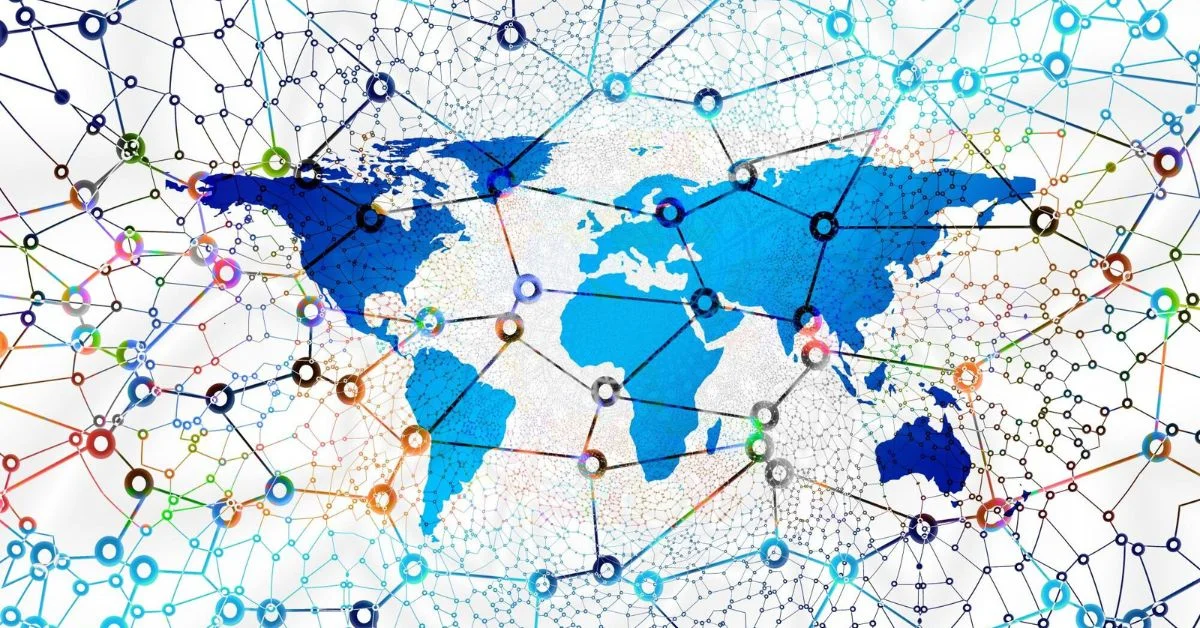BUSINESS
Balancing Bytes: Achieving Work-Life Harmony in the IT Sector

The Information Technology (IT) sector is a dynamic and exciting field that lies at the very heart of modern economies. It has revolutionized the way we work, communicate, and conduct daily activities. Yet, this same sector is notoriously demanding, often blurring the lines between work and personal life.
In this article, we’ll explore the complexities of work-life balance within the IT industry and suggest strategies to help IT professionals achieve the elusive equilibrium they seek.
Understanding the IT Sector’s Unique Challenges
In the IT sector, high workloads and tight deadlines are all too common. The industry moves at a relentless pace, with constant innovation and rapid technological advancements. This environment creates particular challenges that can encroach on personal time and well-being. IT professionals often find themselves working long hours, dealing with high stress, and facing unpredictable work schedules.
Additionally, the boundary-less nature of tech tasks can lead employees to feel they should always be ‘on,’ ready to jump into a problem-solving mode at a moment’s notice. Understanding these unique challenges is the first step in rectifying the balance.
The ‘Always-On’ Culture
The convenience of cloud-based services and mobile connectivity has fostered an ‘always-on’ work culture. While this is beneficial for flexible working and remote collaboration, it also means employees may struggle to disengage from work mentally and physically.
Rapid Technological Change
The IT industry’s rapid pace of technological advancement means professionals must continually learn and adapt to remain competitive. This quest for knowledge often spills over into personal time, as employees must keep their skills sharp to stay relevant.
High-Stress Environments
From system crashes to looming project deadlines, the IT workplace is a pressure cooker of potential stressors. Learning how to cope with and manage these stresses is crucial for achieving work-life balance.
Strategies for Balancing Work and Life
Even in the face of demanding work schedules and tight project deadlines, there are strategies IT professionals can employ to cultivate a healthier work-life balance.
Time Management and Prioritization
Effectively managing time and priorities can make a significant difference. Tools like the Pomodoro Technique, which breaks work into manageable intervals with frequent short breaks, can increase focus and productivity.
Setting Boundaries
Setting clear boundaries between work and personal life is essential. Avoid bringing work home or restricting work-related communications to certain hours. Interactive calendaring tools can provide clear visibility for others on your work hours.
Leveraging Technology
Paradoxically, technology can be both the cause of and solution to work-life balance issues. Automation and productivity apps can reduce the time spent on repetitive tasks, freeing up hours to invest in personal endeavors. Tools for monitoring screen time can also raise awareness of when work encroaches on leisure.
Upskilling and Learning Opportunities
Rather than viewing the ever-changing nature of technology as a burden, embrace it as an opportunity to expand your skillset and knowledge. Take advantage of training opportunities and certifications, such as those offered through Pearson VUE for CompTIA.
The Role of Employers
Organizational support plays a pivotal role in ensuring work-life harmony. Employers can adopt policies and practices that value their employees’ personal time and well-being as much as their professional contributions.
Flexibility and Remote Work
Offering flexible work schedules and remote work options can drastically improve employees’ ability to balance their personal and professional lives. This gives IT professionals the autonomy to structure their work around personal commitments.
Mental Health and Wellness Programs
Employers can offer resources and support to help employees manage stress and maintain mental and physical well-being. These can include counseling services, gym memberships, mindfulness programs, and healthy living incentives.
Supportive Leadership
Managers who lead by example and encourage a healthy work-life balance set the tone for the entire organization. Leaders can play a critical role in establishing a culture that respects and supports employees’ time away from work.
The Future of Work-Life Balance in IT
As we look to the future, the IT industry is poised to develop even more advanced solutions for achieving work-life balance. Innovations such as AI-driven scheduling, self-regulating systems that manage workloads, and virtual reality for real-world disengagement could transform the way we approach balance in the workplace. However, with each technological leap, we must consider the human element, ensuring that these tools enhance rather than overwhelm our lives.
BUSINESS
Mastering Debt Income Funds: A Comprehensive Guide to Enhancing Your Portfolio

For investors seeking a blend of stability and steady income in their investment portfolios, debt income funds offer a promising avenue. Often viewed as a safer alternative to equity investments, these funds can provide regular income while preserving capital. This detailed guide delves into the world of debt income funds, helping you understand and learn opportunities with debt income funds to make informed investment decisions that align with your financial goals, learn opportunities with depb income funds
What are Debt Income Funds?
Debt income funds, commonly referred to as fixed-income securities, invest in a combination of debt instruments such as government bonds, corporate bonds, mortgage-backed securities, and other debt securities. The primary aim of these funds is to provide investors with regular income through interest payments, making them an ideal choice for income-focused investors.
Key Benefits of Investing in Debt Income Funds
1. Regular Income Stream: One of the most appealing aspects of debt income funds is their potential to generate a steady and predictable income stream through interest payments, which can be distributed monthly or quarterly to investors.
2. Lower Risk Profile: Compared to stocks and other equity investments, debt income funds typically have a lower risk profile. The investments are made in securities that have a fixed repayment schedule and interest rate, providing greater security and stability.
3. Diversification: By incorporating debt income funds into your portfolio, you can diversify your investments and reduce overall risk. This diversification can help buffer against volatility in the stock market.
4. Capital Preservation: Investors who are risk-averse or nearing retirement may find the capital preservation aspect of debts income funds attractive. These funds focus on maintaining the principal investment while providing returns through interest income.
How to Invest in Debt Income Funds
Step 1: Assess Your Financial Goals and Risk Tolerance
- Determine your investment objectives and how much risk you are willing to accept. Understanding your need for income generation versus capital growth is crucial in choosing the right debt income fund.
Step 2: Research Different Funds
- Learn opportunities with debts income funds by researching various funds available in the market. Look into their performance history, the credit quality of bonds they hold, their interest rate sensitivity, and management fees.
Step 3: Diversify Your Investments
- Consider diversifying across different types of debt funds, such as short-term, long-term, corporate bond, and government bond funds to balance risk and optimize returns.
Step 4: Monitor and Rebalance
- Regularly review your investment to ensure it continues to meet your financial goals. Rebalance your portfolio as necessary in response to changes in market conditions or in your financial circumstances.
Key Considerations When Choosing Debt Income Funds
1. Interest Rate Risk: Interest rate changes can affect the value of debts income funds. When interest rates rise, the value of existing bonds typically falls.
2. Credit Risk: The risk that the issuer of a bond will not be able to make principal and interest payments. Review the credit ratings of the bonds within the fund’s portfolio to assess this risk.
3. Inflation Risk: Inflation can erode the purchasing power of the payments from bonds. Consider inflation-protected securities as a potential component of your investment strategy.
4. Liquidity Risk: Some debts income funds may invest in securities that are less liquid than others, making it difficult to sell these investments at a fair price.
Maximizing Returns from Debt Income Funds
1. Use a Laddering Strategy: By creating a portfolio of bonds with staggered maturities, you can manage interest rate risks and provide liquidity and income continuity over time.
2. Focus on Quality: Investing in bonds with higher credit ratings may offer lower yields but provide greater security and stability.
3. Stay Informed: Keep up with financial news and trends related to interest rates and economic indicators that can impact bond markets. Knowledge can be a powerful tool in adjusting your investment strategy proactively.
Conclusion
Debt income funds can serve as a cornerstone of a well-rounded investment portfolio, offering benefits such as regular incomes, reduced risk, and capital preservation. By taking the time to learn opportunities with debt incomes funds and understanding how to effectively manage these investments, you can significantly enhance your financial stability and success. Whether you are a conservative investor focused on incomes or someone looking to diversify their investment risks, debt incomes funds provide a viable and strategic option for achieving your long-term financial objectives.
BUSINESS
Exploring the Benefits of ETRM Systems in Energy Trading

From the flick of the switch in our homes to the aggressive markets that power our industries, energy trading is an indispensable aspect of modern life. It’s a complex dance of supply and demand, regulations, geopolitics, and weather that hinges on one thing above all – information.
In this high-stakes arena, ETRM systems serve as beacons of order in an otherwise turbulent financial world. These systems are the backbone of energy trading and provide the necessary tools to manage risk.
Let’s take a closer look at how ETRM systems are unlocking growth in the energy trading industry.
Read on to begin!
Improved Operational Efficiency
This energy trading solution streamlines and automates many processes. This includes trade execution and settlement. These systems save time and resources for energy trading companies. This is made possible by reducing manual work and human error.
This allows them to focus on more strategic tasks. Such tasks include analyzing market trends and developing new trading strategies. Also, this power trading platform can integrate with other business functions. They can span from accounting and risk management.
This allows them to provide a comprehensive view of the company’s operations. Such an integration improves efficiency. This is achieved by eliminating silos and promoting better communication between departments.
Enhanced Decision-Making
Access to real-time data and advanced analytics tools is crucial in today’s fast-paced energy trading market. ETRM systems provide traders with accurate and up-to-date information on:
- market conditions
- supply and demand dynamics
- price fluctuations
This enables them to make faster, more informed decisions. Thus, allowing them to have a competitive edge.
Traders can also identify profitable opportunities and act on them before their competitors. This comes along with the ability to analyze vast amounts of data.
If you discover more about ETRM systems, you will find that some also offer predictive analytics. They help forecast future market trends and optimize trading strategies with the right decisions. This can further enhance a company’s bottom line.
Moreover, ETRM systems can also be tailored to fit the unique needs and processes of each energy trading company. This ensures that they are adaptable to different market conditions and regulations.
Scalability and Adaptability
ETRM systems must also be able to adapt and scale accordingly. This comes along as the energy trading industry continues to evolve. Such systems are designed to handle large volumes of data. Thus, they can easily integrate with new technologies and platforms.
This scalability allows energy trading companies to grow their operations. This is also achieved without worrying about outgrowing their systems. It enables them to quickly respond to market changes. Thus, adopt new trading strategies as needed.
Explore the Benefits of ETRM Systems in Energy Trading
ETRM systems play a crucial role in the energy trading industry. These systems are essential for navigating the complex and dynamic landscape of energy trading. They help unlock growth opportunities for companies.
The use of ETRM systems will only increase in importance. This comes along as technology continues to advance and regulations become more stringent.
So, embracing these systems if you are looking to succeed in the energy trading market.
Should you wish to explore other topics, visit our blog page. We’ve got more posts!
REAL ESTATE
Unveiling the Significance of Fill Dirt in Construction Projects

Introduction to Fill Dirt
In the realm of construction, landscaping, and environmental projects, the term “fill dirt” often emerges as a critical component. This humble material serves as the foundation for various endeavors, offering support, stability, and a plethora of other benefits. In this article, we delve into the depths of fill dirt, exploring its definition, uses, types, benefits, challenges, and much more.
What is Fill Dirt?
Definition
Fill dirt san Diego, in its simplest form, refers to the soil used to fill in depressions, level off terrain, or raise the ground’s elevation. It typically consists of soil excavated from construction sites or agricultural areas.
Composition
Fill dirt is primarily composed of soil, clay, sand, gravel, and organic matter. Its composition can vary depending on the source and location, with different ratios of these components influencing its properties.
Uses of Fill Dirt
Fill dirt finds widespread applications across various industries:
Construction
In construction projects, fill dirt is indispensable for creating a solid foundation, leveling building sites, and backfilling trenches or excavations.
Landscaping
Landscapers utilize fill dirt to sculpt the terrain, fill in low-lying areas, and create raised beds or slopes for gardens and outdoor spaces.
Environmental Projects
Fill dirt plays a crucial role in environmental restoration efforts, such as wetland mitigation, erosion control, and reclamation of disturbed sites.
Types of Fill Dirts
Several types of fill dirt are commonly used:
Topsoil
Topsoil is the uppermost layer of soil, rich in organic matter and nutrients, making it ideal for gardening and landscaping projects.
Subsoil
Subsoil lies beneath the topsoil and consists of clay, silt, and sand. While less fertile than topsoil, it provides structural support and stability.
Organic Fill
Organic fill, derived from compost or decomposed plant matter, enhances soil fertility and drainage, making it suitable for agricultural and landscaping purposes.
Benefits of Using Fill Dirts
Cost-Effectiveness
Fill dirt is often readily available at construction sites or excavation projects, reducing the need for purchasing expensive materials.
Stability and Support
Fill dirts provides a stable foundation for structures, prevents soil erosion, and minimizes the risk of foundation settlement.
Environmental Benefits
Using fill dirts from local sources reduces the environmental impact associated with transporting soil over long distances, thereby lowering carbon emissions.
How to Choose Fill Dirt
Selecting the right fill dirt is crucial for the success of any project:
Quality Assessment
Inspect the fill dirts for debris, contaminants, and proper soil composition to ensure its suitability for the intended use.
Quantity Estimation
Calculate the volume of fill dirts required based on the project’s specifications and dimensions of the area to be filled.
Source Verification
Verify the source of fill dirts to ensure compliance with local regulations and avoid potential legal issues or environmental liabilities.
Preparing and Using Fill Dirt
Proper preparation and installation techniques are essential for maximizing the benefits of fill dirt:
Site Preparation
Clear the area of vegetation, debris, and any obstructions before spreading fill dirts to ensure a smooth and even surface.
Proper Installation Techniques
Compact the fill dirts in layers using heavy machinery to achieve the desired density and stability, preventing future settlement.
Safety Considerations
While fill dirts offers numerous advantages, it also poses certain risks that must be addressed:
Environmental Impact
Improper disposal or contamination of fill dirts can harm ecosystems, pollute water sources, and disrupt natural habitats.
Soil Testing
Conduct soil tests to assess the quality and composition of fill dirts, identifying any potential contaminants or hazardous substances.
Erosion Control
Implement erosion control measures such as silt fences, vegetation barriers, and sediment ponds to prevent soil erosion and runoff.
Challenges Associated with Fill Dirt
Despite its utility, fill dirts presents certain challenges that require careful consideration:
Contamination Risks
Fill dirts sourced from industrial sites or landfills may contain pollutants, toxins, or hazardous materials that pose health and environmental risks.
Settlement Issues
Improper compaction or inadequate site preparation can lead to settlement problems, structural damage, and costly repairs.
Regulatory Compliance
Complying with local regulations, permits, and environmental standards is essential when sourcing and using fill dirts to avoid legal repercussions.
Case Studies and Examples
Explore real-world examples of fill dirts projects, highlighting successful implementations, innovative techniques, and lessons learned.
Future Trends in Fill Dirt Usage
As technology advances and environmental concerns grow, the use of sustainable fill materials, such as recycled aggregates and synthetic soils, is expected to rise.
Conclusion
In conclusion, fill dirt serves as a versatile and invaluable resource in various industries, offering solutions for construction, landscaping, and environmental challenges. By understanding its properties, applications, and considerations, stakeholders can harness the full potential of fill dirts while mitigating risks and maximizing benefits.
FAQs
What is the cost of fill dirt?
- The cost of fill dirts varies depending on factors such as location, quantity, and quality. It can range from a few dollars per cubic yard to higher prices for specialty blends or certified soil.
Can fill dirts be used for gardening?
- Fill dirts can be used for gardening, but its suitability depends on the composition and quality of the soil. Mixing fill dirt with compost or topsoil can improve its fertility and drainage for gardening purposes.
How do I know if the fill dirts is suitable for my project?
- Conduct a thorough inspection and testing of the fill dirts to assess its composition, compaction, and potential contaminants. Consulting with soil experts or engineers can also provide valuable insights into its suitability for specific projects.
Is fill dirts the same as topsoil?
- Fill dirts and topsoil are distinct types of soil with different compositions and uses. While topsoil is rich in organic matter and nutrients, fill dirts is often composed of subsoil, clay, sand, or recycled materials and is primarily used for filling and grading purposes in construction and landscaping projects.
Are there any environmental concerns associated with fill dirts?
Fill dirts sourced from contaminated sites or containing hazardous materials can pose environmental risks, including soil and water pollution, habitat destruction, and health hazards. Proper testing, sourcing, and disposal practices are essential for minimizing these concerns.

 ENTERTAINMENT1 week ago
ENTERTAINMENT1 week agoExploring the Kristen Archives: A Treasure Trove of Erotica and More

 TECHNOLOGY4 months ago
TECHNOLOGY4 months agoBlog Arcy Art: Where Architecture Meets Art

 LIFESTYLE1 week ago
LIFESTYLE1 week agoWho Is Sandra Orlow?

 LIFESTYLE4 months ago
LIFESTYLE4 months agoThe Disciplinary Wives Club: Spanking for Love, Not Punishment

 ENTERTAINMENT5 days ago
ENTERTAINMENT5 days agoKiss KH: The Streaming Platform Redefining Digital Engagement and Cultural Currents

 GENERAL4 months ago
GENERAL4 months agoWhat are stories of male chastity? A Comprehensive Guide

 ENTERTAINMENT4 weeks ago
ENTERTAINMENT4 weeks agoMonkeyGG2: Your Personal Gaming Hub

 HOME IMPROVEMENT2 days ago
HOME IMPROVEMENT2 days agoGet Your Grout to Gleam With These Easy-To-Follow Tips












